#Audi and bmw
Text

506 notes
·
View notes
Text


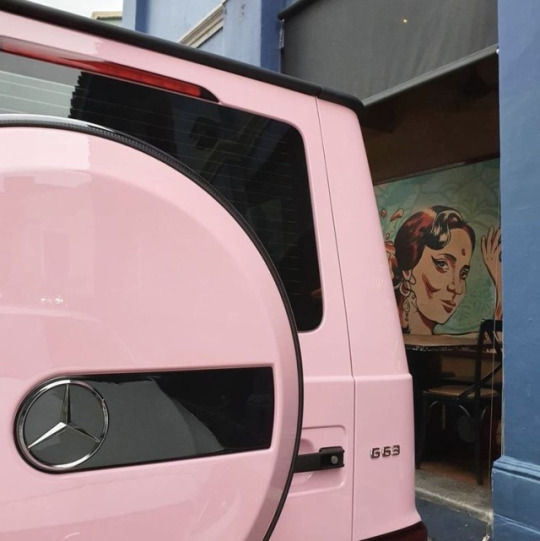
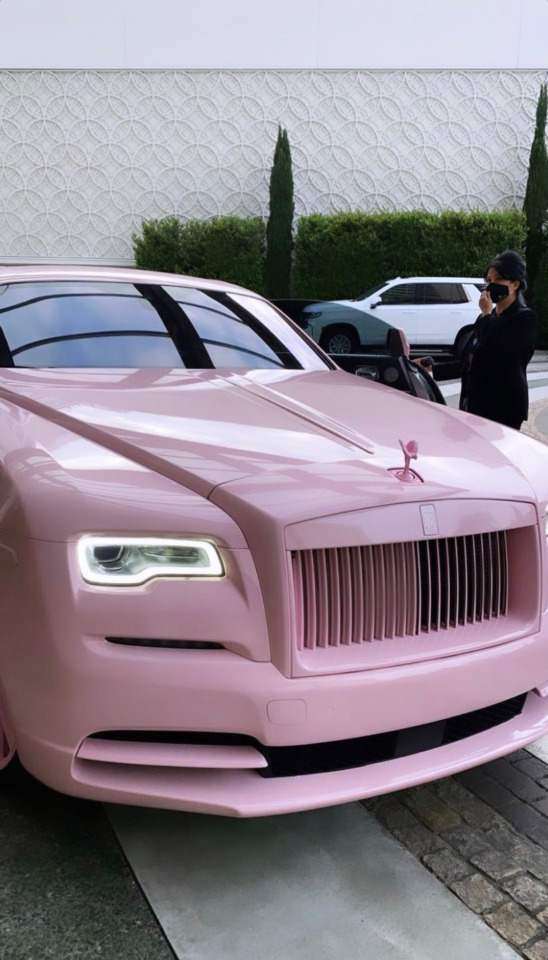
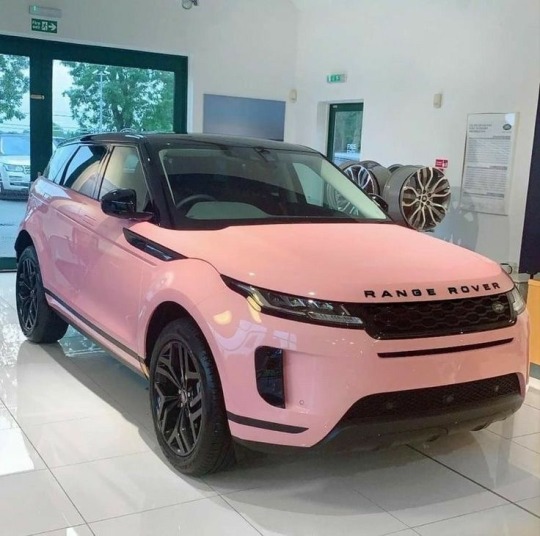

new obsession: baby pink cars
#myuploads#cars#pink cars#barbie pink#barbie car#pink#myaesthetic#audi#bmw#range rover#posted on my twitter si i’m going to post it here too#prettyvixenavenue
7K notes
·
View notes
Text

Lincoln Continental Full Sized Coupe Concept
What if... Lincoln brought back the top tier luxury coupe the Continental with an advanced Landau Roof for that added classical touch. Seen here in a Hunter Green Mica with White Landau roof. This coupe would be fully customizable. bespoke to each individual drivers taste.
256 notes
·
View notes
Text
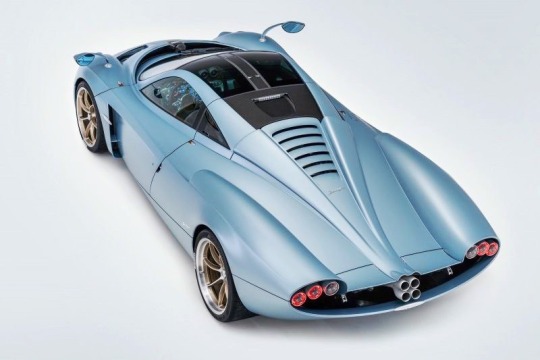
#car#auto#cars#auto luxury#luxury#automotive#autos#amazing#carphotography#luxurycar#carlifestyle#luxury car#car luxury#autofoto#auto sport#bmw#new cars#awesome#mercedes#audi
5K notes
·
View notes
Text

Lamborghini é uma fabricante italiana de automóveis desportivos de luxo e de alto desempenho criada originalmente para competir com a Ferrari com sede no município de Sant'Agata Bolognese
As duas versões, S e Performante, do SUV esportivo têm preços de R$ 3,9 milhões e R$ 4,3 milhões, respectivamente. Ambas trazem o motor V8 4.0 biturbo de 666 cv e a diferença está no visual e acabamentos, para atender diferente públicos. vlw plays
#ferrari#audi#bmw#cars#autos#chevrolet#classic car#ford#lamborghini#luxury car#jogadeladinho#oscabaplay
41 notes
·
View notes
Text
Love that vibe⚡⚡⚡

47 notes
·
View notes
Text
El mejor anuncio de coches de la historia
128 notes
·
View notes
Photo



#wonwoo#jeon wonwoo#seventeen#svt wonwoo#maxsixgif#this is what architects and art critics and men with property portfolios look like#business chic#does he own a BMW Jag or Audi#heheh#wonwoo in glasses#also sorry all the ww gifs are coming out awful#i tried and i'm too tired to change and re edit them
384 notes
·
View notes
Photo

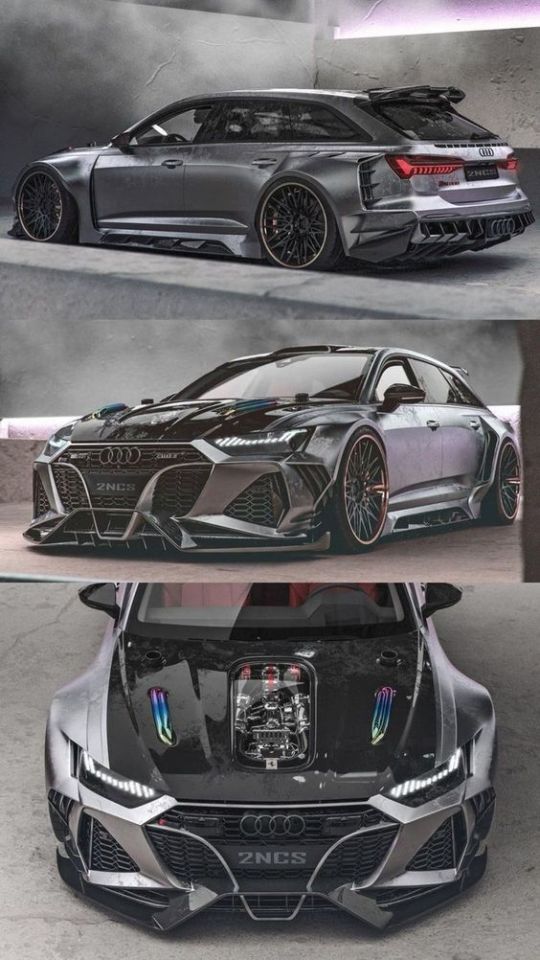
#cars#sports cars#carporn#car#dodg#gold#bmw#bmwfamily#bmwedit#bmwfanatics#bmwworld#audi#autos#Luxury cars#Sydney#muscle car#usa
308 notes
·
View notes
Text

#bmw e36#bmw#cars#nature#sealife#motorsport#german cars#jdm#modified car#porsche#audi#mercedes amg#mercedes#porsche 911 rsr#porsche rwb#rwb#rauh welt begriff#drift cars#audi r8#bmw e30#bmw e38#bmw e46
54 notes
·
View notes
Text

230 notes
·
View notes
Note
Do u know any reason why the Dodge Durango and Dodge Charger look kinda similar?
I see them on the streets all the time and I've noticed (at least the newer ones) have the same headlight and tail light design

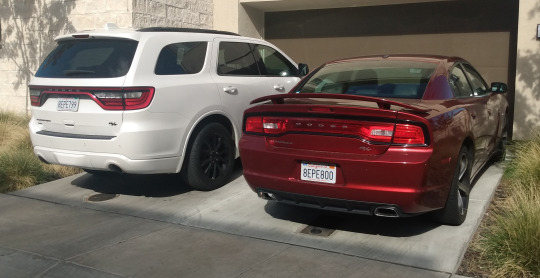
Well, the short answer to that is "design language". The explanation of that short answer, however, is a bit more complicated than that, and is about why cars look the way they look - what makes them different, what makes them similar, what makes them change and how to tell them apart. So hop on under the Read More and come learn all that!
Design language is the sum of design rules and guidelines that make a brand's product range both distinct from others and coherent within itself. If you've ever recognized whose commercial it was, who printed the book, who manufactured the device, who designed the car, that was design language doing its job!
You know those "If [brand] made [thing]" renders you see out there? That's following a brand language: crossing what [thing] looks like, which is usually pretty well determined, with the much more nebulous concept of what [brand] looks like. Defining a design language is defining the answer to that second question.
So, let's look at the Dodge lineup in 2011 (the first year with both current Charger and current Durango).
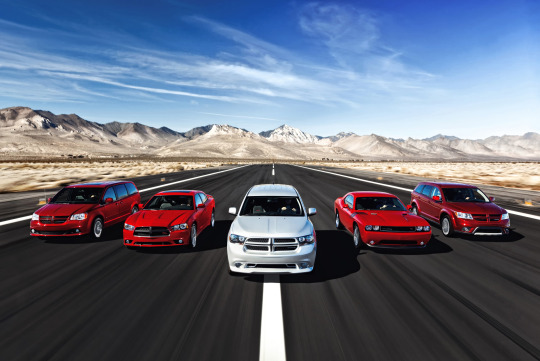
There's a couple of key shared traits: the trapezoidal grille (facing downwards in 'friendly' cars and upwards in 'aggressive' ones), the small indentation in the middle of the hood, the single angular headlight housing containing two round lighting elements, and some more minute stuff.
Except one of these cars features none of that, because sometimes, when updating (and, especially, when bringing back) a model, the design traits of its ancestors are taken into account, and for the Challenger, Dodge's then-current design language was almost totally disregarded in favor of faithfulness to its 1970 ancestor.


Whereas the new Charger did the exact opposite, its 2006 revival being completely based on 2006 Dodge's design language, with extremely little left of the '60s original (I see the rear window shape and the beltline if I'm being Christmas generous). Of course, this already works towards the similarity we're getting at.
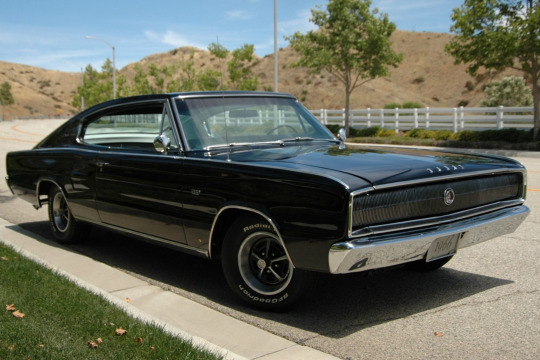
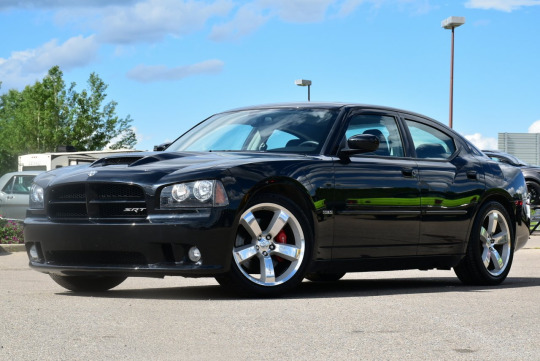
But the bulk of a car's design decisions are not about design language, but about the kind of car it has to be. A designer must contend with aerodynamics, safety requirements, customer needs and expectations, with the end result being that cars of the same segment will usually end up having the same basic proportions and largely overlapping silhouettes. See the cars below:

Sure, very different styles can produce a more angular or more soft outline (see the two cars in the background), but within the same era and segment many completely different cars will be almost indistinguishable between the wheels (see the two cars in the foreground).
So the most design freedom is usually found in lights and grilles, since those can be quite radically altered in shape and proportions without interfering much with functionality (unlike for example window shapes or rooflines), and even slight changes in them can alter the look and perception of a car, because we parse them similarly to faces, and thus they can make a car looks angry, sad, silly, goofy, or adorably gleeful.
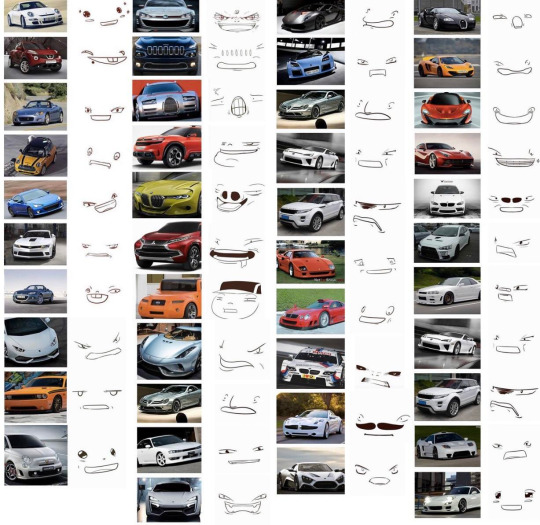
So most often, the most distinctive features of a car -and by extension of a design language- are found in lights and grilles (the outline of the headlights, the inside arrangement, the grille's shape, proportion, pattern, etc.), with the rest of the car being shaped by general principles like "angular design", "simple, smooth lines" or the likes. So if you want to learn to recognize cars, lights and grilles are usually what you should focus on, as you need to be an expert for your average car's overall shape to tell you much more than its segment and decade (and perhaps market, but that's a longer conversation). That does explain, doesn't it, why lights and grilles are similar in Charger and Durango, two cars in very different segments designed to look aggressive in a distinctly Dodge way.
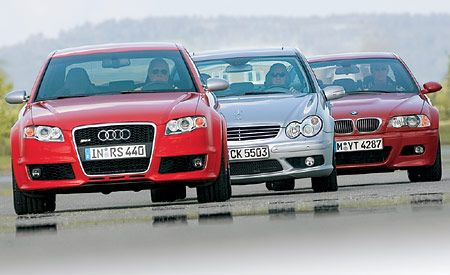
Let's exemplify this principle with three cars from the same segment, decade and country:
In the mid-00s, Audi introduced a tall, chrome-lined downward trapezoid grille that contained the number plate;
Mercedes had their classic grille -with the thick top chrome strip, small silver accents and the underlying middle line- and “merging circles” headlights;
BMWs still had their staple "kidney grilles" and their quad circular headlights now contained in a wide, flat shape with round, downwards curving edges.
So even when these brands made different cars in different segments, those key traits kept them perfectly recognizable as theirs.
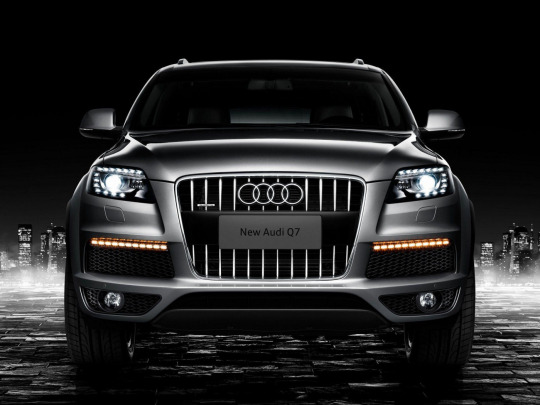
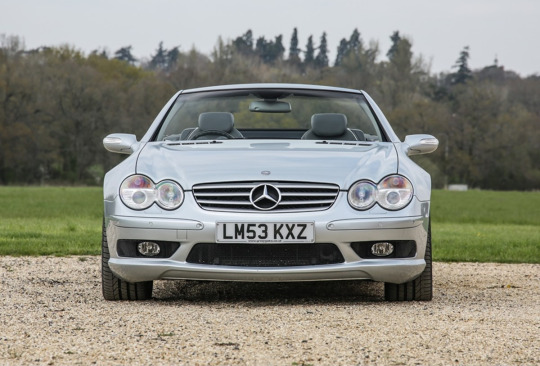
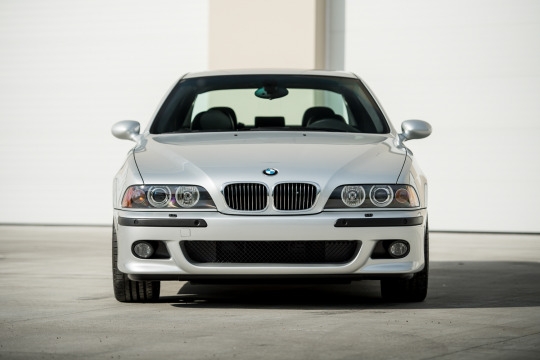
As you see in Mercedes, a brand's designs can get very consistent - but it can also get very inconsistent, too. For one, you don't design for a manufacturer, you design for buyers, so the design will change with who the buyers are, what they want, what they're attracted to - and when that is pretty consistent within a brand you get a lineup like Volvo's...
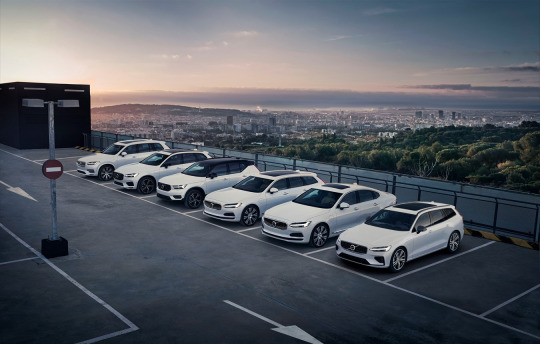
...whereas if you have a brand whose buyers vary wildly in all metrics that matter, you get a lineup like Kia's.

(I love this picture because you keep thinking "Well those two look similar at least" and they keep turning out to be two versions of the same car.)
The lineup's styling is also going to be more cohesive the more precious brand recognition is for it: a Ferrari needs to look like a Ferrari because that's most of why people buy a Ferrari to begin with, whereas the last time a Skoda didn't look like a Skoda it literally called for advertising.
Design languages also change and evolve with time, of course, and that's an element at play in the observation that spurred this post: Charger and Durango look similar not just because they were designed with the intention of looking similar, but also because they were updated with the goal of remaining similar, and were made even more so by the use of similar solutions to modernize their looks.
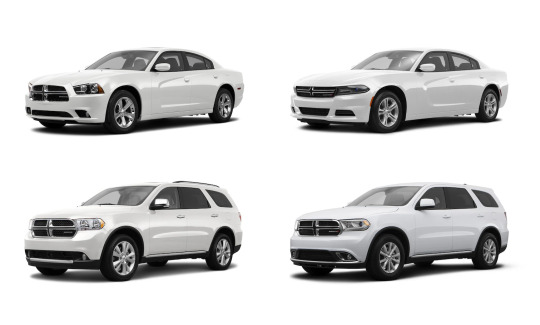
You'll notice that this was just an update of lights, bumpers and grilles - and indeed, these are what's known as "facelifts": where a new generation is usually redesigned from the ground up or retains little more than the core structure, facelifts are instead intragenerational updates that stay clear of radical changes (at most, things like hood and fenders can get updated if new headlight shapes require it).
But as we covered, those are the parts that matter - so while something as little as a facelift can be absolutely impossible to notice...

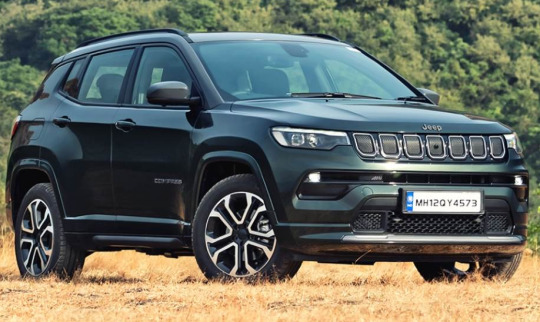
(seriously, two of my neighbors have these and it took me weeks of seeing them side by side to notice differences)
...it can also be effective enough to carry a model into a new decade...

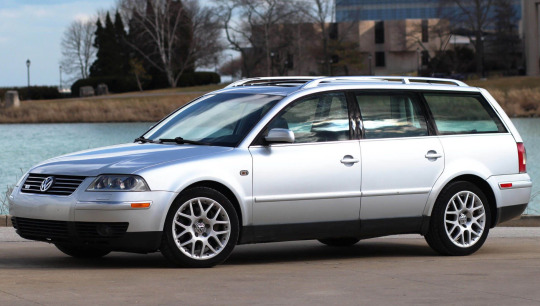
...ore even powerful enough to completely salvage a car's design, and by extension its fortunes.

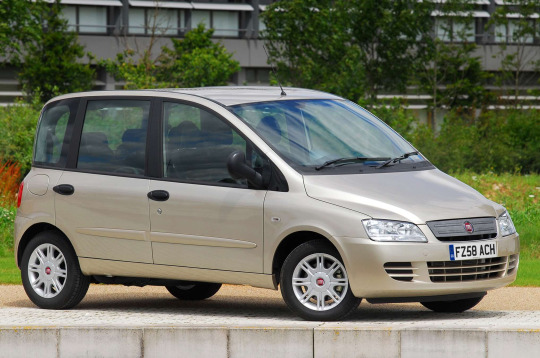
However, of course, it can wield the opposite power just as well.
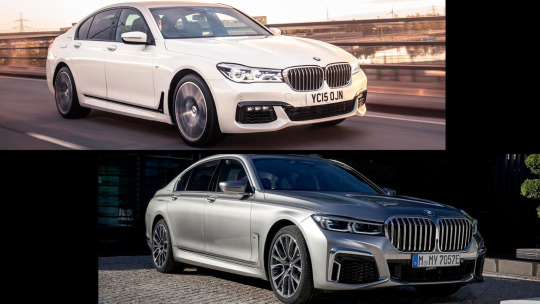
Christ.
Welp, no mistaking that for not a BMW now, is there.
But to be clear, while BMW's styling has completely gone down the gutter lately, don't get the impression that any brand at any time is beyond a miss in this regard.

So, to close, while there is merit to the claim that cars today seem all the same, as we've discussed that's only true -and for good reasons- when looking at them from a distance. But when a landscape seems depressingly monotonous, you just have to look closer. And so, getting closer, analyzing the traits that weren't dictated by their nature, the decisions that weren't made for them by external factors, looking at what of them was shaped by agency and not necessity, they will all reveal themselves to all be different and to all have a personality of their own (bland as it may be). And that personality will change over time: changes are normal within a life, and actually good - they're a sign that life has been long enough to outlive the trends and ideas that shaped it, and that it's open to the new ones that have blossomed since. Trying too hard to fit in or stand out or seeking change for its own sake without a clear direction can ruin something good, sure, but change can also be very positive: it can allow keeping up with the times, or even a transformation for the better that lets go of what didn't work and accentuates what was good - and often, when it's done right, the world rewards it. And none of this requires a distancing from heritage or family, or even identity. In fact, as seen with our two cars, change can make a family bond even tighter.
This year will bring lots of change. Here's hoping we all manage to make it change for the better.
So yeah, hopefully that answers your question, anonymous asker who may well have fucked off to Hollywood in the over month and a half it took me to get to this (whoopsie)!
Immense thanks to @ldub0775 for the effort and thought he joined me in pouring into this post, and to all followers reading this for sticking around into 2024 to witness that effort's fruits. Trust me, you will really like what's coming.
Links in blue are posts of mine about the topic in question: if you liked this post, you might like those - or the blog’s Discord server, linked in the pinned post!
#design language#car design#dodge charger#dodge durango#dodge challenger#audi#mercedes#bmw#volvo#kia#the great catchup
38 notes
·
View notes
Text

1930 BMW 3/15 PS Cabriolet DA2
36 notes
·
View notes
Text
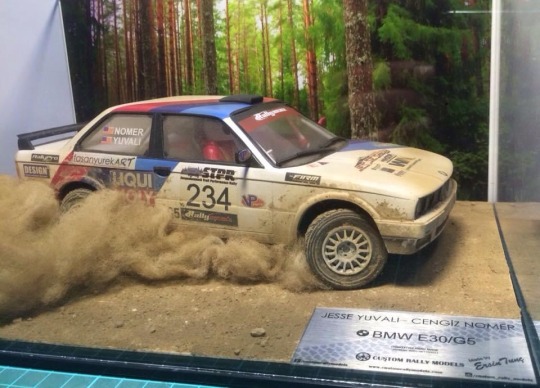
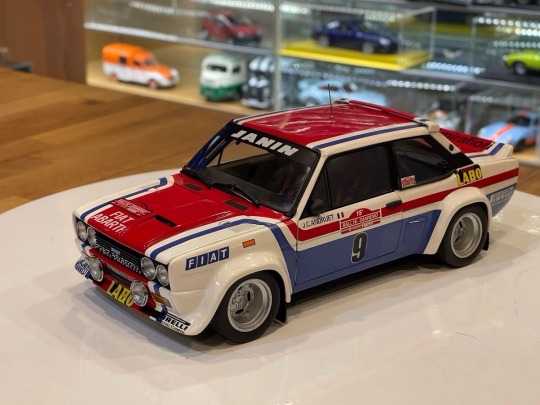

Model cars.
49 notes
·
View notes
Text
I think drivers who don't slow down while going through a puddle should be stoned to death
46 notes
·
View notes


